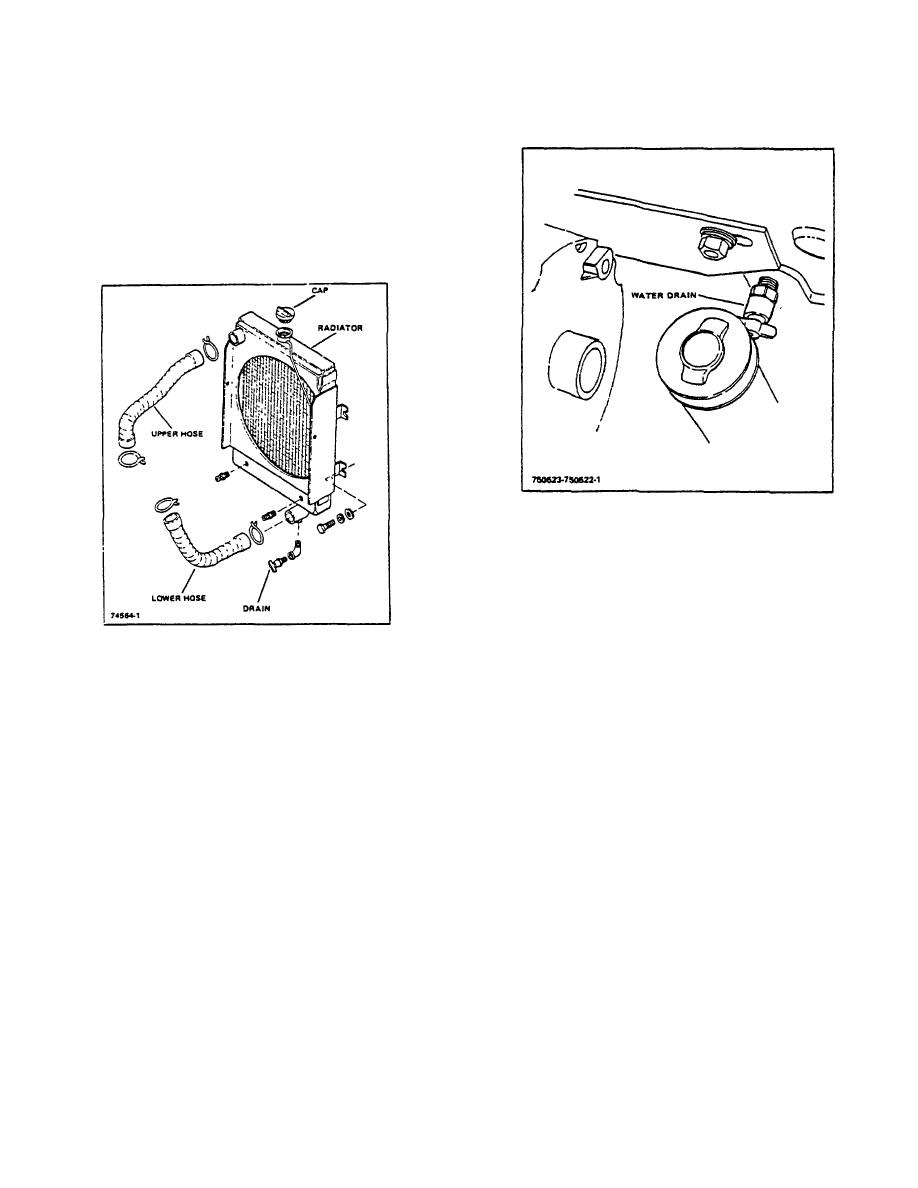 |
|||
|
|
|||
|
|
|||
| ||||||||||
|
|
 TM 10-3930-644-14&P
TOPIC 3. RADIATOR
A. DESCRIPTION
The radiator is the fin and tube type and is vertically
supported by angle bracing to the truck frame. The front
of the radiator is protected from structural damage by a
heavy grille mounted in the counterweight. An overflow
tube is connected to the filler neck and leads to the
bottom of the radiator.
Figure 3-2. Water Drain Cock Location
3. Loosen the retaining hose clamps and remove
the inlet and outlet hoses from the top and
bottom of the radiator.
NOTE
An oil cooler is an integral part of the
Figure 3-1. Radiator Assembly
bottom of the radiator to prevent
overheating of the transmission. The
B. REMOVAL
oil cooler lines must be removed
prior to removing the radiator.
When it becomes necessary to remove the radiator for
service, the following procedure is recommended:
4. Remove the securing capscrews and
the
radiator grille from the back of
the
1. Remove the engine side panels and raise the
counterweight.
operator's seat.
5. Remove the capscrews which hold the radiator
2. Remove the radiator cap, open the drain cocks
in position on the mounting bars located on the
beneath radiator and alternator, and drain the
frame inside the counterweight.
cooling system.
6. Slide the bottom of the radiator out of position.
CAUTION
After the filler neck of the radiator has cleared
Cooling system is pressurized.
the Inside top of the counterweight, the radiator
Coolant can boil if pressure is
can easily be removed.
released at atmospheric pressure.
When removing radiator cap protect
C. INSPECTION-SERVICE
hand with glove or rag. Rotate cap
slowly until a hissing sound is heard.
If the tubes in the radiator become clogged, the
Leave cap in position until hissing
obstructions may sometimes be removed by reverse
stops, then turn cap until hissing
flushing the radiator.
starts again or cap comes free.
R-155-1
3-109
|
|
Privacy Statement - Press Release - Copyright Information. - Contact Us |